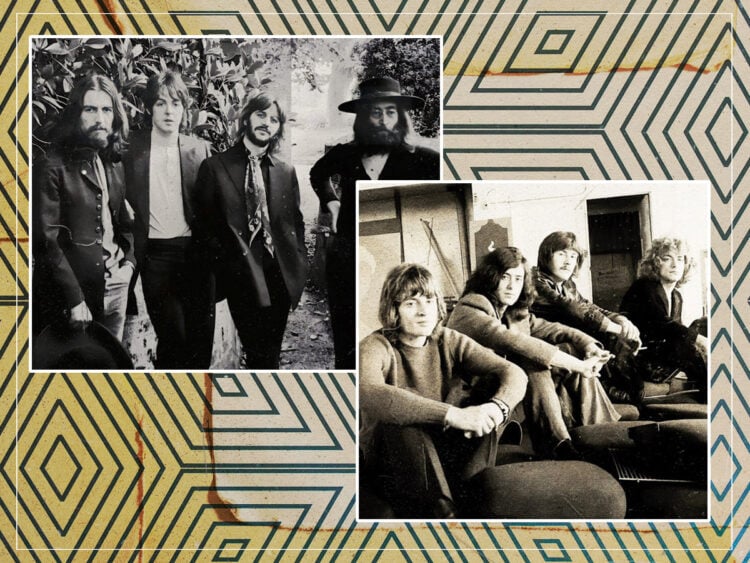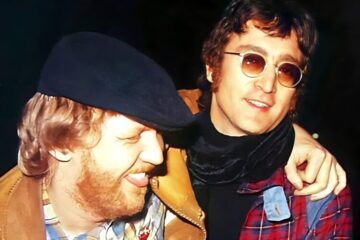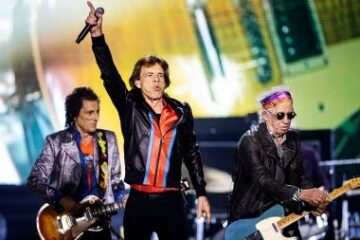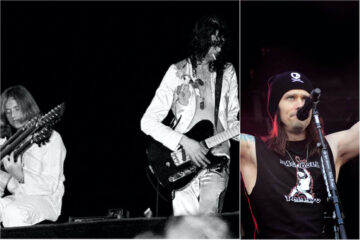MUSIC
The Beatles trick that inspired an iconic Led Zeppelin song
There aren’t many technical innovations in rock history that The Beatles hadn’t touched on, at least a little. From their time as teenybopper outfits to becoming studio lab rats in the next half of their careers, the Fab Four were known to experiment with anything they could get their hands on as long as it translated into a good song. While Jimmy Page may have been taking rock and roll in a different direction with Led Zeppelin, he did knick one idea for the band’s later output.
While The Beatles may have been going strong by the time Zeppelin made their first forays into rock history, their approaches seemed to be like night and day. Whereas the songwriting of John Lennon and Paul McCartney made for some of the most awe-inspiring pop songs of the era, Page wanted to take an unconventional approach to rock stardom, electing not to release any singles following the band’s first album.
Rather than focus on any massive hit to steer them forward, Zeppelin made the album their art form, looking to create songs that complimented each other instead of issuing singles. Although Page may have been able to paint his masterpieces across two sides of vinyl, his technical side also made for glorious feats of rock brilliance.
Throughout a song like ‘Whole Lotta Love’, for instance, Page practically plays the studio in the breakdown, using various echoing effects to create a cacophony before his guitar solo finally comes back in. After experimenting in the blues mould for the band’s first four records, though, Page wanted to play with what the studio could do on albums like Houses of the Holy.
For the song ‘No Quarter’, Page would talk about playing around with various tape speeds on the final mix. Instead of the usual nervy energy found on their previous outings, the plodding groove of the song led to one of the heaviest tracks Zeppelin would produce, pivoting between two chords and adding a foreboding sense of dread across nearly six minutes.
When talking about the mixing decisions, Page said that he wanted to make sure that the track had a heavy atmosphere behind it, telling Brad Tolinski, “I applied the vari-speed to the overall track of ‘No Quarter’. I dropped the whole song a quarter tone because it made the track sound so much thicker and ominous.”
However, The Beatles did what Page had done nearly a decade prior. After setting up shop for the sessions that would become Revolver, the band used varying tape speeds to record the basis of the song ‘Rain’. In addition to being one of the first tracks to feature backwards music in the background, slowing the tape down also welcomed the band into the world of psychedelia, which they would later flesh out on tracks like ‘Tomorrow Never Knows’.
Regardless of where Page got the idea, both songs have the same effect on the listener, almost sounding like the entire song is in slow motion in the headphones. Led Zeppelin may broken down barriers that were unthinkable for rock at the time, but it sometimes pays to take inspiration from one of the founders of studio ingenuity.
For the song ‘No Quarter’, Page would talk about playing around with various tape speeds on the final mix. Instead of the usual nervy energy found on their previous outings, the plodding groove of the song led to one of the heaviest tracks Zeppelin would produce, pivoting between two chords and adding a foreboding sense of dread across nearly six minutes.
When talking about the mixing decisions, Page said that he wanted to make sure that the track had a heavy atmosphere behind it, telling Brad Tolinski, “I applied the vari-speed to the overall track of ‘No Quarter’. I dropped the whole song a quarter tone because it made the track sound so much thicker and ominous.”
However, The Beatles did what Page had done nearly a decade prior. After setting up shop for the sessions that would become Revolver, the band used varying tape speeds to record the basis of the song ‘Rain’. In addition to being one of the first tracks to feature backwards music in the background, slowing the tape down also welcomed the band into the world of psychedelia, which they would later flesh out on tracks like ‘Tomorrow Never Knows’.
Regardless of where Page got the idea, both songs have the same effect on the listener, almost sounding like the entire song is in slow motion in the headphones. Led Zeppelin may broken down barriers that were unthinkable for rock at the time, but it sometimes pays to take inspiration from one of the founders of studio ingenuity.




